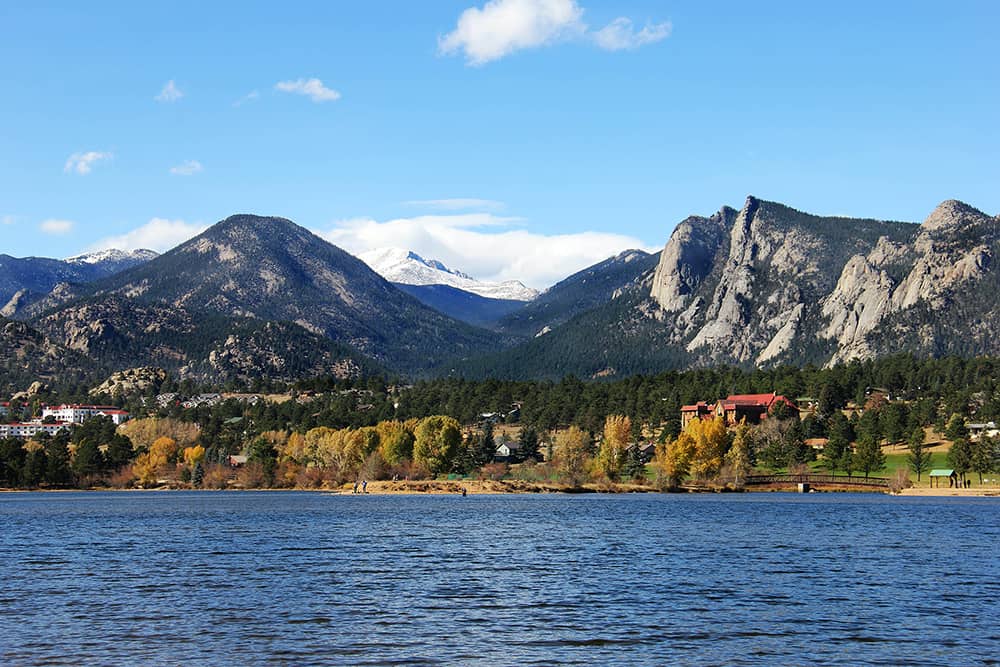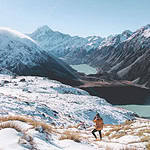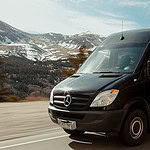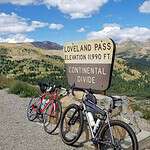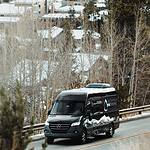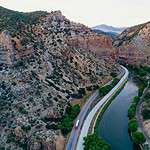Ah, the Mile-High City! Denver, with its unique blend of urban sophistication and rugged mountain charm, attracts millions of visitors each year. Whether you’re staying in the city for business, pleasure, or just passing through, understanding how to navigate Downtown Denver, Denver International Airport (DEN), and the surrounding areas can save you time, stress, and even money. And if you wish to avoid stress over navigating Denver driving yourself, ride with our Hourly Transportation services and travel through Denver stress-free!
For those choosing to drive through Denver, we’ve compiled some tips to help you on your Denver journey.
General Orientation:
Denver is laid out in a grid, making it relatively straightforward for newcomers. The mountains are to the west, serving as a convenient landmark.
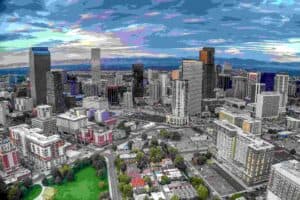
Major Highways:
- I-25: The backbone of Denver’s highway system, the I-25 runs north to south. Starting from the New Mexico border, it passes through Denver and continues north towards Wyoming. Key junctions include:
- Tech Center: An economic powerhouse region housing many businesses.
- Downtown Denver: Where it meets I-70.
- North Denver areas: Includes the popular neighborhoods of Thornton and Westminster.
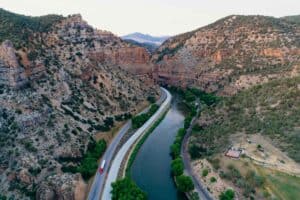
- I-70: Spanning from Utah to Maryland, its Colorado stretch is vital for those traveling to the mountains or heading eastward. Notable stretches include:
- Mountain Corridor: This provides access to renowned ski resorts. It’s particularly busy during winter weekends.
- The Central 70 Project: An ongoing major infrastructure upgrade in the Denver stretch. Always check for traffic alerts.
- US-36: Connecting Denver to Boulder, this highway represents a key corridor for those heading to the university town or the beautiful Flatirons.
- C-470: Serving as a semi-circular beltway around Denver’s southwestern quadrant, C-470 is essential for those wanting to bypass downtown traffic when heading to the southern suburbs or the mountains.
Public Transportation Options:
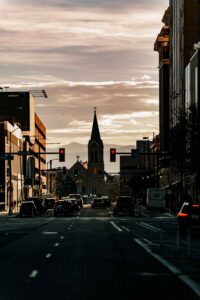
Although Denver’s public transportation options are not as robust as other large cities, it does have a few options to choose from. The city additionally offers zero fare times during the year; in 2023, passengers could ride the RTD for free in the months of July and August.
- RTD Light Rail: With multiple lines stretching from the far suburbs to the downtown core, the RTD Light Rail system is an efficient way to traverse the metro area. Stations like Littleton, Englewood, and Golden offer park-and-ride options for added convenience.
- A Line Train: A part of the RTD network, this train is specifically designed for travelers and connects Union Station downtown directly to DEN. It runs every 15 minutes during peak hours, ensuring timely airport transfers.
- Buses: The Regional Transportation District (RTD) operates an extensive bus network, covering Denver and its surrounding areas. Key routes include the Free MallRide on 16th Street Mall and the Free MetroRide, ideal for downtown navigation.
- FlexRide: A reservation-based shuttle service, it’s perfect for areas where regular buses might not be feasible.
- FasTracks: An ambitious expansion project aiming to bolster Denver’s public transport system by adding new rail lines and enhancing bus services and park-and-rides.
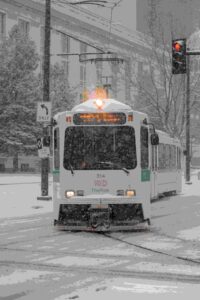
Parking Opportunities in Denver:
Parking in Denver, like many major cities, can be a bit of a challenge, but with the right tips and knowledge, you can find the perfect spot for your vehicle.
- Street Parking:
- Denver offers a variety of on-street parking downtown. Most of these require payment, which you can make using meters that accept coins, credit cards, and even mobile payment options.
- Parking Garages and Lots:
- There are numerous private parking garages and lots scattered around the city. These can be more expensive than street parking, but they often offer the convenience of not having to search for a spot.
- Places like the Denver Performing Arts Complex have their own large parking structures. Rates might vary based on events, so be sure to keep any eye out for any posted signage.
- Residential Parking:
- Some neighborhoods have restricted parking zones to prioritize residents. Always check for signs indicating these zones to avoid hefty fines.
- Event Parking:
-
- Special events, especially sports games at places like the Coors Field or the Mile High Stadium, can influence parking availability and rates in their respective areas. It’s wise to arrive early or use special event parking areas.
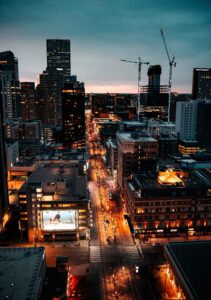
Tips to Navigate Denver Parking:
- Mobile Apps: Use parking apps like ParkMobile, which allow you to pay for and extend your parking remotely. This is especially handy to avoid parking tickets.
- Early Bird Rates: Some garages offer discounted rates if you get in early and leave by the evening, often a great deal for downtown workers or early city visitors.
- Hotel Parking: If you’re staying at a hotel downtown, inquire about their parking facilities. Some might offer valet or have their own lots/garages. This can sometimes be more expensive than public parking, but it offers convenience.
- Construction Zones: Denver, like any growing city, has its fair share of construction zones, which can eat up parking spots. Always be on the lookout for “No Parking” signs near construction areas.
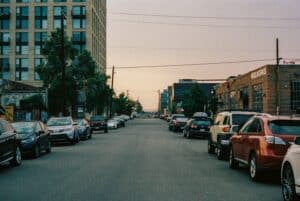 Peak Traffic Times:
Peak Traffic Times:
Like any major city, Denver has rush hours.
- Morning: 7:00 AM to 9:00 AM
- Evening: 4:00 PM to 6:00 PM
If possible, avoid driving during these times, especially if you have a flight to catch!
Express Toll Lanes:
For those willing to pay for convenience, Denver has express lanes on several major highways, including parts of I-25 and US-36. These lanes often allow for faster travel, but fees vary based on time of day and congestion.
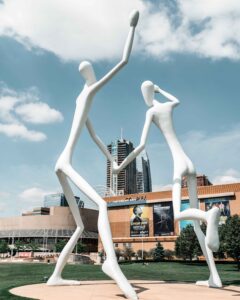 Ongoing Construction Projects:
Ongoing Construction Projects:
Denver is growing, and with that comes construction. Check Cotrip to view accurate traffic information and road construction and maintenance that might affect your route. Projects on major routes like I-70 can have significant traffic implications.
Tips and Tricks for the Unfamiliar Traveler:
- Biking: Denver is a bike-friendly city with numerous bike lanes and trails. Consider renting a bike for a leisurely day around town.
- Stay Connected: Apps like Google Maps or Waze provide real-time traffic updates, helping you avoid congestion.
- Airport Timing: DEN is one of the country’s largest airports. It’s recommended that travelers arrive at least 2 hours before domestic flights and 3 hours for international ones.

Navigating Denver, from its vibrant downtown to the sprawling expanse of DEN, can seem daunting, but with a bit of preparation and understanding, you can traverse the city with ease. Whether you’re in town for business, vacation, or to visit family, the Mile-High City is ready to welcome you. And if you’re just passing through Denver on your way to your mountain destination, be sure to book on of our Shared Shuttles for convenient transportation that will save you stress over parking, traffic, and construction!


